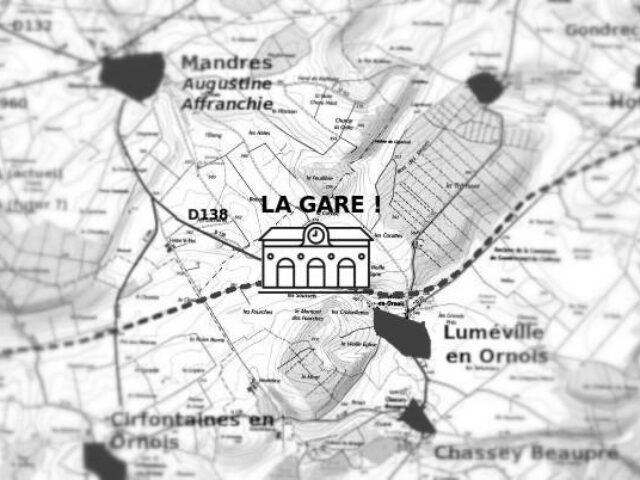[zine] Animals hate the nuclear industry (and vice-versa)
The nuclear industry would love to be seen as green. It would also like to have us think that it is not harmful to non-human animals (or even beneficial !). This zine offers an inventory of interactions betwenn the nuclear industry and non-human animals. Spoiler: animals have it rough. Whether in the event of an unpredicted disaster or when it’s “buisness as usual”, the atomic industry subjects them to radiations, as well as all sorts of chemical polution, overheated waters and the grinding of countless aquatic organisms, but also animals experimentation, and even the implementation of gigantic industries that exploits them. But sometimes too, animals become hazardous for nuclear instalations…
Anti-speciesist struggle is anti-nuclear! and vice-versa…
Introduction
We have found that pro-nuclear people like to use flawed arguments about non-human animals to explain why nuclear use is not dangerous to health. In doing so, they benefit from the silence that exists about the suffering and morbidity caused by the nuclear industry on non-human animals. We have therefore tried to identify different impacts of nuclear power on animal life.
The sources we consulted were often interested in the health of non-human animals in reference to that of humans: because studying the impacts of radiation on animals provides a better understanding of its effects on humans, or because irradiation of non-human animals and plants is a potential source of contamination for humans. But the purpose of this text is to focus on the consequences on non-human animals. Animal suffering is more than enough reason for us to revolt against nuclear power and its world. We do not accept the Western ideology that we call speciesism and which places the white human being above other animal species, giving him the right to exploit, torture and kill any non-human individual, or to grab and destroy territories for the profit of capitalists without any consideration for the forms of life that depend on them. The nuclear industry fits completely into this speciesist ideology. It has no ethics, and its benefits are almost unlimited both in terms of their extent in time and space and in their magnitude.
While doing research on nuclear power, we come across a lot of information that is disseminated by communicators who have financial interests in it. The nuclear lobbies have big budgets: the International Atomic Energy Agency (IAEA) has more than 500 million euros for its mission to promote the development of civil nuclear power. The UN and the World Health Organization (WHO) are affiliated with it, giving it disproportionate economic and political power.
Radioactivity is odourless and invisible. Nuclear power is a very technical subject. All the components are brought together for the monopolization of the understanding of this subject by scientists and elites who will know how to select the information to guide the opinion. For example, there is a multiplicity of radioactive elements, and sometimes it is enough to study this element rather than another, or to take a measurement at this or that place, or to change the scale of the research to obtain a conclusion that suits a certain vision.
When we give examples of individuals who have suffered the consequences of radiation, nucleocrats highlight other individuals who have fared better1 or retort that the case is marginal and that we must look at on a larger scale according to criteria that suit them2. This stratagem quickly dispossessed us of the subject in favor of expertise, counter-expertise and counter-counter-expertise. Figures are always posed as fundamentally objective, yet on such a subject there seem to be as many figures as opinions. Thus, for Chernobyl the range of the number of deaths goes from 50 deaths to… 1 million (with other sources citing all intermediate figures)3. Similarly, the count of people displaced by the tsunami and the Fukushima disaster ranges from 90,000 to 470,000.
For this text, we have gathered a large amount of data from scientific studies that seemed rigorous and reliable to us. Nevertheless, it is important to say that we must not be dispossessed of the nuclear subject by scientists: they are also exceeded by the subject and its magnitude. Among the difficulties which make it impossible to measure the fallout from atomic energy, we can cite a time scale which exceeds by far the understanding capacity of human being: it takes more than 200,000 years for plutonium to cease to be highly toxic – and the damage caused on the living by radioactivity spread over generations in the event of DNA alteration.
The main idea behind nuclear protection is dilution: when there is a large rain, industrialists can simply drop more radioactive compounds in water or the atmosphere. The sea, the rivers and the air are large and there is no account to be rendered on the raw quantity of radioactive compounds which are rejected there. Dying nuclear resumes in the majority of cases to die of cancer (1st cause of mortality in rich countries) or other strange diseases4, which is most often impossible to determine the causes with certainties or if they could have been avoided . You could say the same thing about miscarriages and malformations in infants. Same for the global decrease in fertility. Nucleocrats, petrochemical manufacturers and plastic manufacturers only have to blame one another indefinitely before finding themselves all together to dinner after work. The crime is perfect: once the poison has been diluted, the victims are scattered throughout the globe and on dozens or hundreds of generations. Quantifying the consequences of nuclear energy on life is therefore a difficult and perhaps even impossible task.
If we go on to use figures and statistical studies, we need to bear in mind that this quantitative approach is not the only one possible. To claim that there were very few victims of the Chernobyl disaster is perfectly indecent (Jancovici, if I see you, I’ll bite you). But as to whether there were many or a great many, the question should not make us forget that these individuals existed and that their suffering was real, horrible and unjust.
To download the full version, click here.
1 As in the documentary Chernobyl, a natural history, by Arte.
2“Research is ongoing to determine the non-acute (i.e. long-term) effects of radiation on non-human biota. Recent international results indicate that changes to some terrestrial organisms, particularly mammals, cannot be excluded, but their importance to population integrity is unclear.” – Quote from the September 2015 study of the consequences of a hypothetical severe nuclear accident and the effectiveness of mitigation measures. This kind of logic would be like saying “there are many health consequences for humans, but the human population is increasing, so we will say that it is okay”.
3See the Chernobyl nuclear disaster page on wikipedia.org https://en.wikipedia.org/wiki/Chernobyl_disaster
4“In terms of low doses of radiation, the official radiation protection system only takes into account two types of effects: cancers and hereditary effects (and, for the latter, are now counted only on the effects on the first two generations ). Studies-relating in particular to the inhabitants of territories contaminated by Chernobyl-have however shown that prolonged exposure to ionizing radiation, in particular internally, could lead to the damage of almost all physiological systems: cardiovascular, neurological, digestive , endocrinian, urinary, etc. […] In its publication 103, the International Commission for Radiological Protection (CIPR) recognizes for example the evidence of a causal link between ionizing radiation and heart disease, cerebral-vascular accidents, digestive and respiratory diseases but stresses that “the light has not yet been made on the types of cellular and tissue mechanisms which could be the cause of such a variety of non -cancerous conditions“. – https://balises.criirad.org/pdf/2021-03_seuils_f5.pdf
05/05/2024
Et sinon, 20 jours avant
on écrivait ça.

Brochure about la Gare – april 2024 version
O joy! You have been waiting for it in this period of expropriations, the new version of the brochure on la Gare : A place te live, organize and resist resistance against the Cigeo project has been... Lire la suite
Et sinon, 39 jours après
on écrivait ça.
